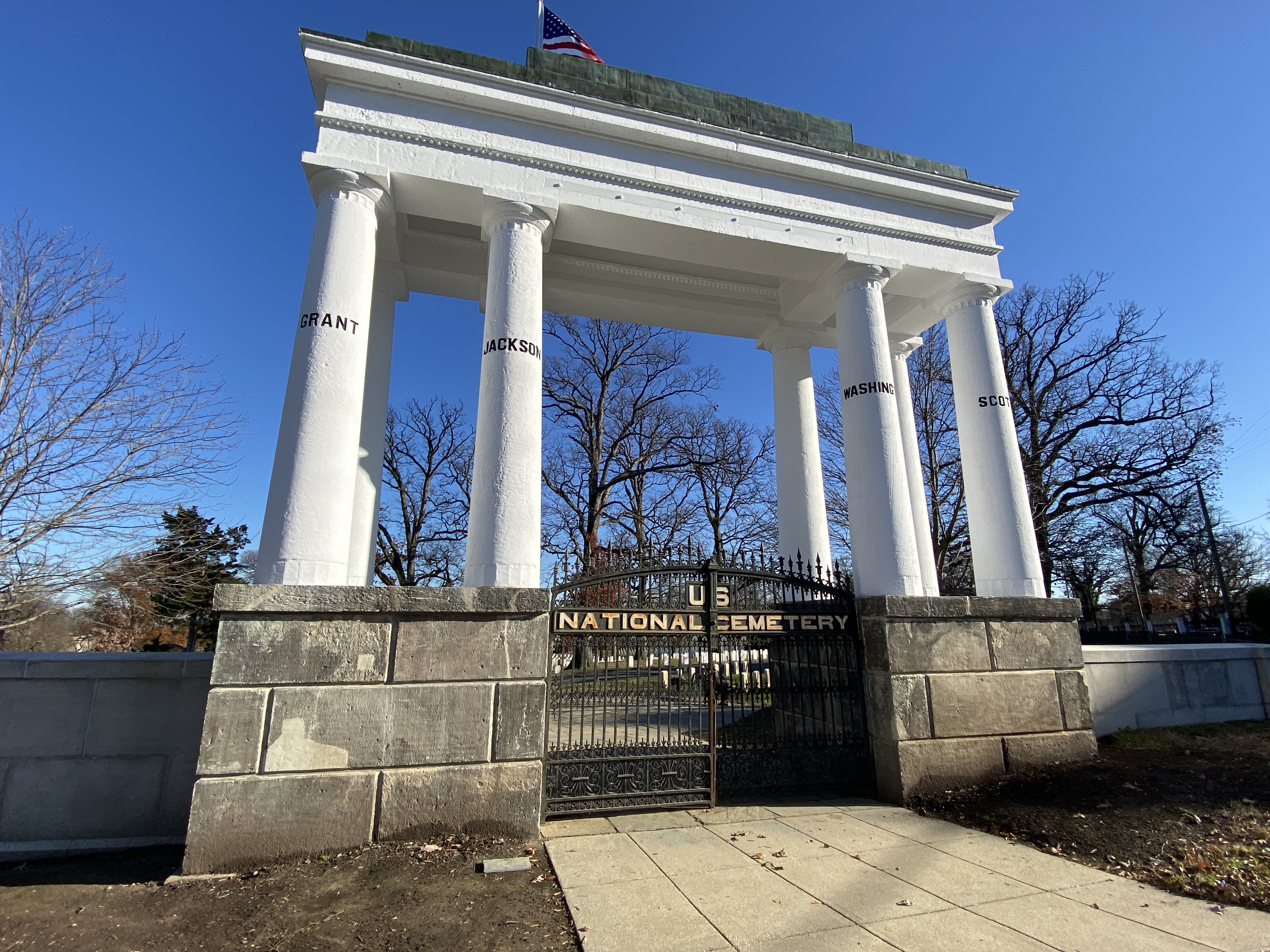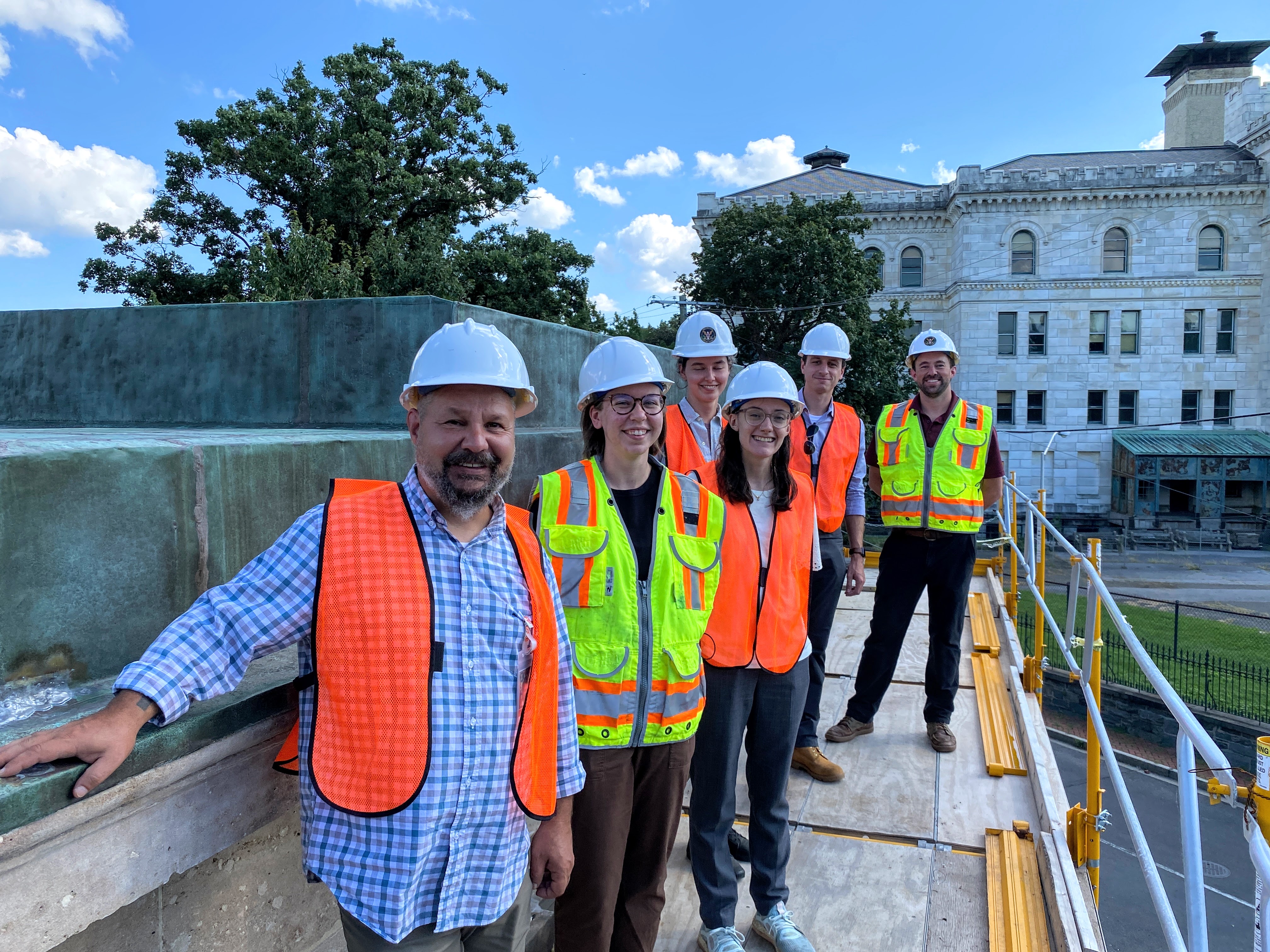
Two Army National Military Cemeteries (ANMC) preservationists are leading the effort to restore two historic gates at the Soldiers’ and Airmen’s National Cemetery in Washington, D.C.
Caitlin Smith, ANMC’s cultural resources program manager, and Daniel Holcombe, the conservation program manager, are overseeing the restoration of the main entrance and lodge gates to their post-Civil War status. Smith and Holcombe provide subject matter expertise to ANMC staff, ensuring that preservation best practices are incorporated into every project.
Both gates date back to the early 1880s and were overseen by Maj. Gen. Montgomery Meigs, the quartermaster for the U.S. Army—who directed the establishment of Arlington National Cemetery during the Civil War. “In some ways, Meigs was also a preservationist,” said Smith. “He reused portions of demolished local landmarks, like the Patent Office and War Department, to create new structures at our two national cemeteries.”
Smith and Holcombe are working with the National Park Service’s Historic Preservation Training Center (HPTC) to restore the gates, which had not received comprehensive treatment in decades. The HPTC team specializes in treating historic materials. “While working on our gates, they’ve rediscovered 19th-century construction methods and recreated lost architectural details,” said Smith. Holcombe added, “Their main goal is properly caring for our cultural resources.”
The main gate, which consists of a masonry base, two iron gates, eight columns and a copper roof, needed extensive work. The HPTC team relocated power lines, cleaned all the masonry, grouted between the stones, patched holes and replaced damaged stones with color-matched patching. They also soldered the copper roof’s seams, replaced broken attachments and made everything watertight. Smith and Holcombe, however, decided not to repaint the gate’s base. “In the historic photos it was never painted,” said Smith, “so we are leaving the Aquia Creek sandstone exposed.”
Finally, the HPTC team removed the non-functioning iron gates to treat them in Frederick, Maryland. There, they sand-blasted the gates, removed damaged pieces, recast missing ones and took molds of different decorative elements. “A couple pieces of the gates had broken apart,” said Smith, “so they had to piece-meal them back together like a puzzle.” The team also replaced a wrap-around chain which held the two iron gates together with a hidden, integrated lock. “The gates will be functional again,” Smith beamed, “and, with their historic finishes restored, they are once again a fitting formal entrance to the cemetery.”
The lodge gate, which includes two cannonball-topped stone columns with iron shields that flank the vehicular entrance, was also restored. The HPTC team stripped the paint off the columns, treated the cannonballs and reset brick pavers around the gate’s base. HPTC also removed the shields, treated the rust and repainted them. In the coming months, the curved iron fencing will be repaired and recoated.
While there is still work to do, both preservationists are satisfied with accomplishments thus far. Smith expects the project to be completed this fall.
Smith and Holcombe are careful about preserving the gates’ character-defining features while honoring ANMC’s mission. ANC and SAHNC, Smith emphasized, “are not static museums; they’re active cemeteries. They need to stay accessible to the public because they’re not frozen in time. They’re dynamic places that continue to evolve.”
